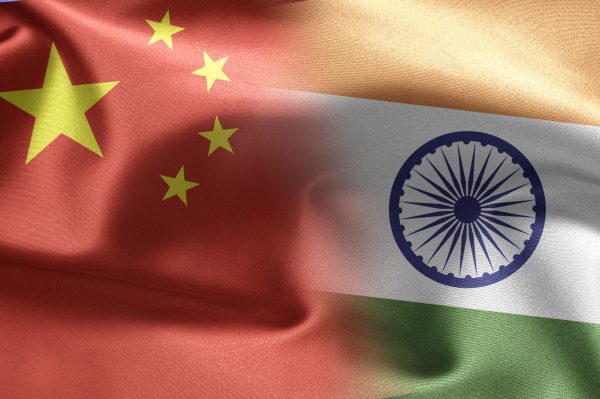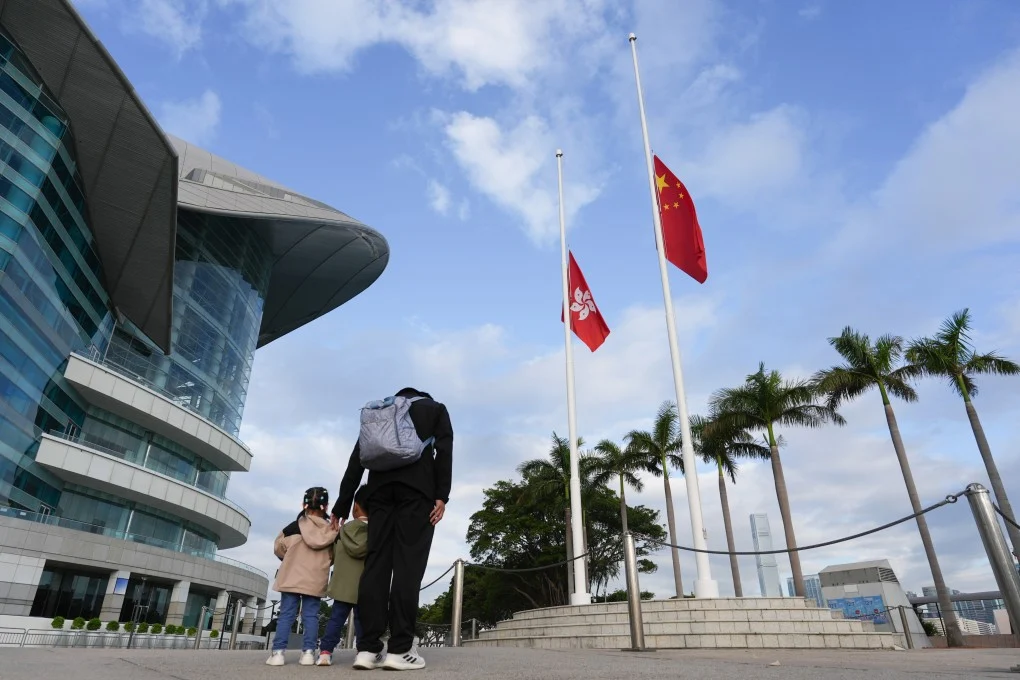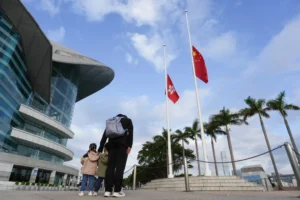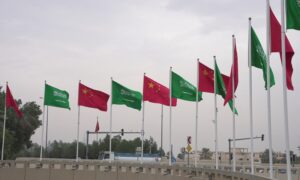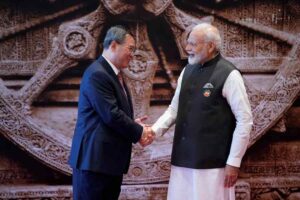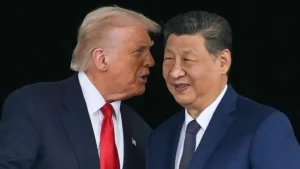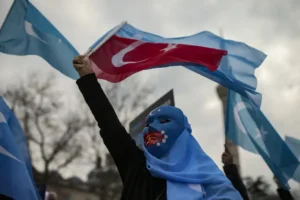No Dragons in the Title Please: A Survey of Indian Scholarship on Indo-Chinese Relations
New Delhi has been wary of its trans-Himalayan neighbor since at least 1959, but the last few years have seen a tremendous rise in publications on China in India. One can assume some of the reasons for this are: (1) the rise of China’s role in the world as such, including in India’s neighborhood; (2) Indian and Chinese economies becoming increasingly more intertwined (rising trade, New Delhi joining AIIB, and so on); and (3) the state of their political relations, especially in the wake of the bloody tensions in Ladakh in 2020. Thus, the 2020-2021 period saw an incredible rise of books on Sino-Indian relations being published in India.
In would not be fair to assume, writing this at the end of December 2021, that all of these publications are the direct result of the clash that took place on June 15, 2020, and therefore represent an attempt to cash in on the rising popularity of the subject; the process of writing a book is usually a long one. It would be more fair to conclude that what we have now is a perfect combination of a long tradition of scholarship on Indo-Chinese relations finally combined with the rising interest in the subject in wider circles, including in the media and on social media. Thus, what I will aim to do here is to summarize the books on the current state India-China relations published by Indian authors in 2020-2021, to suggest what we can learn from them – and where we need more research.
I would stress the consciously limited scope of this commentary. I will not focus on earlier publications, as they have been reviewed by others; I will focus on books, not articles or other types of texts, as I would likely drown in that sea; I will look at books by Indian authors, as it is for China experts to weigh on the texts written from Beijing’s perspective. In other words, this is a glance at how Indian authors view their country’s relations with the PRC.
I will also only include books on current India-China relations, although it would be valuable for the reader if I just make short references to other new publications here. Thus, I will not further mention books on China as such (like Manoj Kewalramani’s “Smokeless War: China’s Quest for Geopolitical Dominance”) and no new books on Indian foreign policy, even if they include relations with China (such as Shivshankar Menon’s “India and Asian Geopolitics: The Past, Present”). I will also leave out other notable and interesting approaches, such as an attempt by an Indian author to present the current Chinese perceptions of India, Abhay Kumar Singh’s “India-China Rivalry: Asymmetric No Longer” (available here). I will also not refer to books on the history of relations between the two Asian giants, including their border dispute – even though recent years have seen the appearance of at least four titles on this matter (and I would be glad if someone more knowledgeable would review them). These are: Nirupama Menon Rao’s “The Fractured Himalaya: India Tibet China 1949-62”; Tanvi Madan’s “Fateful Triangle: How China Shaped U.S.-India Relations During the Cold War”; Francine Frankel’s “When Nehru Looked East: Origins of India-US Suspicion and India-China Rivalry”; and Kyle Gardner’s “The Frontier Complex: Geopolitics and the Making of the India-China Border, 1846–1962.”
Diplomat Brief Weekly Newsletter N Get briefed on the story of the week, and developing stories to watch across the Asia-Pacific. Get the Newsletter
Even after all this sifting, what I am left with is as stack of five books to review here: Ananth Krishnan’s “India’s China Challenge: A Journey through China’s Rise and What It Means for India”; Kanti Bajpai’s “India Versus China: Why They Are Not Friends”; Zorawar Daulet Singh’s “Powershift: India–China Relations in a Multipolar World”; Gautam Bambawale and others’ “Rising to the China Challenge: Winning Through Strategic Patience and Economic Growth”; and Saibal Dasgupta’s “Running with the Dragon: How India Should Do Business with China.”
Enjoying this article? Click here to subscribe for full access. Just $5 a month.
If you are new to the subject, Ananth Krishnan’s “India’s China Challenge” will probably work best as a primer. Kanti Bajpai’s “India Versus China” may serve a similar role as an introduction to the field but it is more general in comparison. Krishnan’s work may also not offer a deep-dive analysis of a particular aspect, but the book, written by a long-time Indian correspondent in China, guides us through some of the major aspects of relations between the two Asian giants. These include: the history of relations and the border disputes, security relations, a bit on the economy, and other areas. Instances of current Sino-Indian relations as seen from a personal perspective of ordinary people, in areas such as sport or culture, serve as interesting additional material. And if these case studies would further attract to you to the subject of Sino-Indian people-to-people ties and their perspectives of each other, reach for slightly older book: Reshma Patil’s “Strangers Across the Border: Indian Encounters in Boomtown China,” published in 2014.
Gautam Bambawale and others’ “Rising to the China Challenge” could be treated as next-step reading after these introductions. The publication leaves the past behind and focuses on the future. It does not describe the history of relations and the genesis of the border dispute, but instead lays out the current challenges in relations with China that face India, and looks for policy prescriptions for these issues. It is like a to-do list of house repairs, paired with a shopping list of things needed to get the job done.
The book’s clear structure and boldly spelled out recommendations are its strength. However, the summary of challenges appears to be based on a very general review of publications, rather than deeper research – most of the sources are recent internet articles. Moreover, the problem with the book’s policy recommendations is that they boil down to saying that India should basically do everything in every field, and this makes some of them rather general and idealistic. This is much more of a wish-list for making the country a world power. However, the policy prescriptions become somewhat more specific in chapter 4, where the authors spell out their opinions on the China-specific challenges faced by New Delhi, and in chapter 6, which offers much more concrete proposals on what can be termed Indian decoupling from China: a strategy to reduce New Delhi’s dependence on imports from the PRC.
If you want to focus on the security aspects of the relationship, try Zorawar Daulet Singh’s “Powershift.” The author has written other books on India-China relations, and while “Powershift” does not focus on defense alone, this is the aspect in which the book stands out from the crowd. Moreover, if you are here because what aroused your interest in Sino-Indian relations where the 2020 clashes in Ladakh, “Powershift” offers a broader context for those events. The author expertly outlines New Delhi’s security challenges and deterrence dilemmas with relations to Beijing, including what in his view have been India’s strategical mistakes as well as the gaps in the tightening defense net being cast by New Delhi’s forces over the Himalayas. Finally, it offers a few concrete recommendations on the directions in which Indian deterrence against China should evolve. For more on this subject – New Delhi’s security dilemmas and deterrence strategies against China in the Himalayas – I also recommend this report by Frank O’Donnell Alexander and K. Bollfrass, “The Strategic Postures of China and India: A Visual Guide.”
Beyond security and politics, the most significant aspect of Sino-Indian relations is the economy. Apart from the above-mentioned “Rising to the China Challenge,” another book which focuses on this topic is Saibal Dasgupta’s “Running with the Dragon.” It offers an interesting take, as it appears to invite us into a completely different world: a world where Indo-Chinese cooperation is still possible and mutually beneficial. The book focuses on economic opportunities in bilateral relations and its narrative is thus largely depoliticized. It offers interesting case studies, promises more chances for Indian companies on the Chinese market (and the other way round), and puts the blame on the trade and investment imbalance between the two Asian giants more on the Indian side.
However, I do have reservations about it. At times, the landscape of China’s political economy that the book paints is a bit too rosy. It would sometimes seem that the PRC is a perfect market, and it is only the Indian companies and diplomatic missions that do not know how to reap its flowers. It is only late in the book that Dasgupta starts to mention problems on the Chinese side, such as non-tariff barriers erected by the Beijing government, and the imbalanced playing field they create. Dasgupta’s book should probably be best read in conjunction with the one written by Bambawale and his coauthors which shows the opposite side of the same coin.
India-China relations will certainly be one of the important variables of the global situation in the 21st century. It is thus encouraging to see the number of books on India-China relations rising so tremendously in India. What this general review of new publications on this subject shows is that there is a great interest in Sino-Indian security relations and the history of the border dispute, and that India’s challenges in relations with China have been well mapped out. What one as a reader would like to read more about in the years to come is a more granular approach to the economic relations between the two and a more realistic analysis of what New Delhi can do to avoid being economically overpowered by the PRC. To add to this wish-list, I would be happy to read a book focused on Sino-Indian struggle for influence in the other countries of South Asia.
